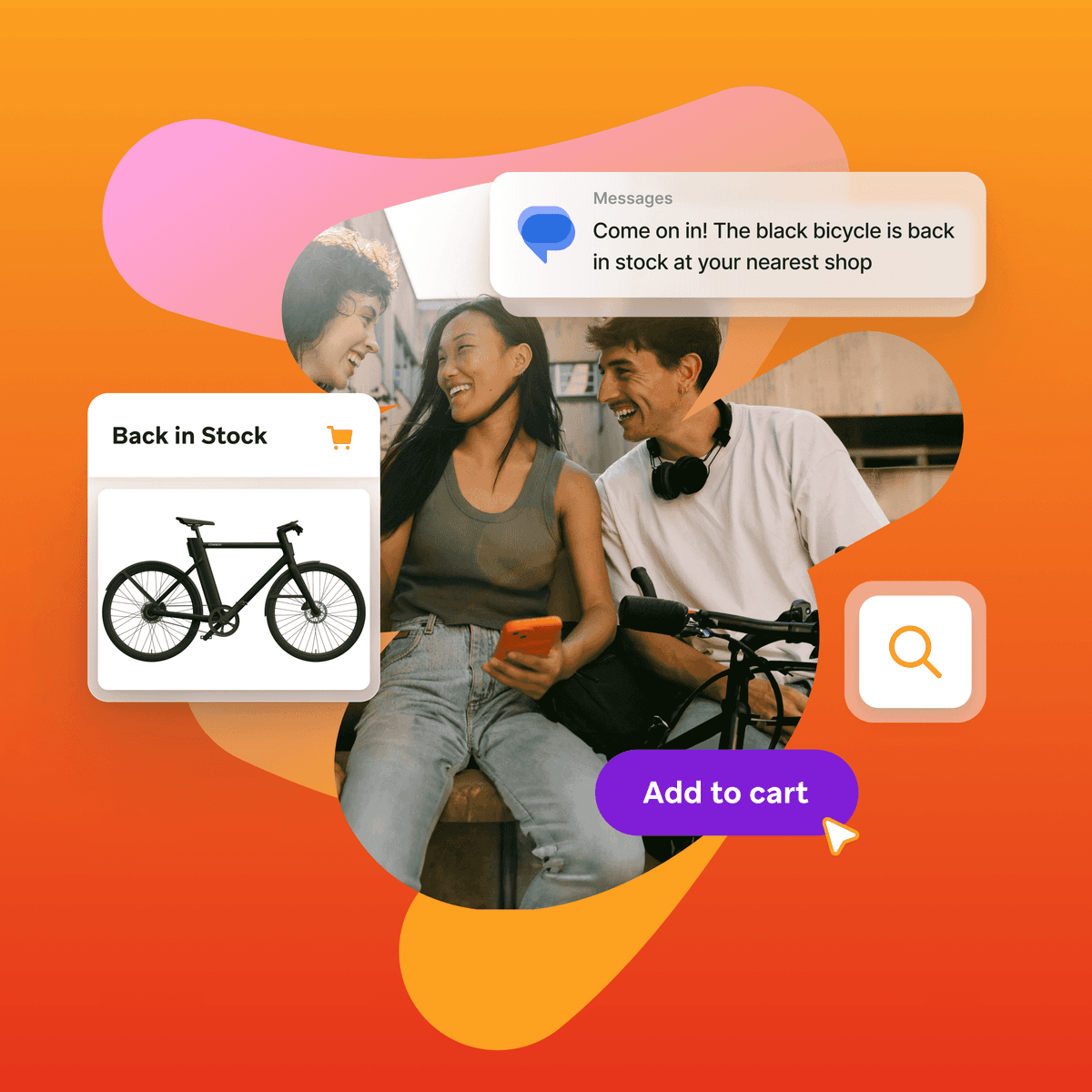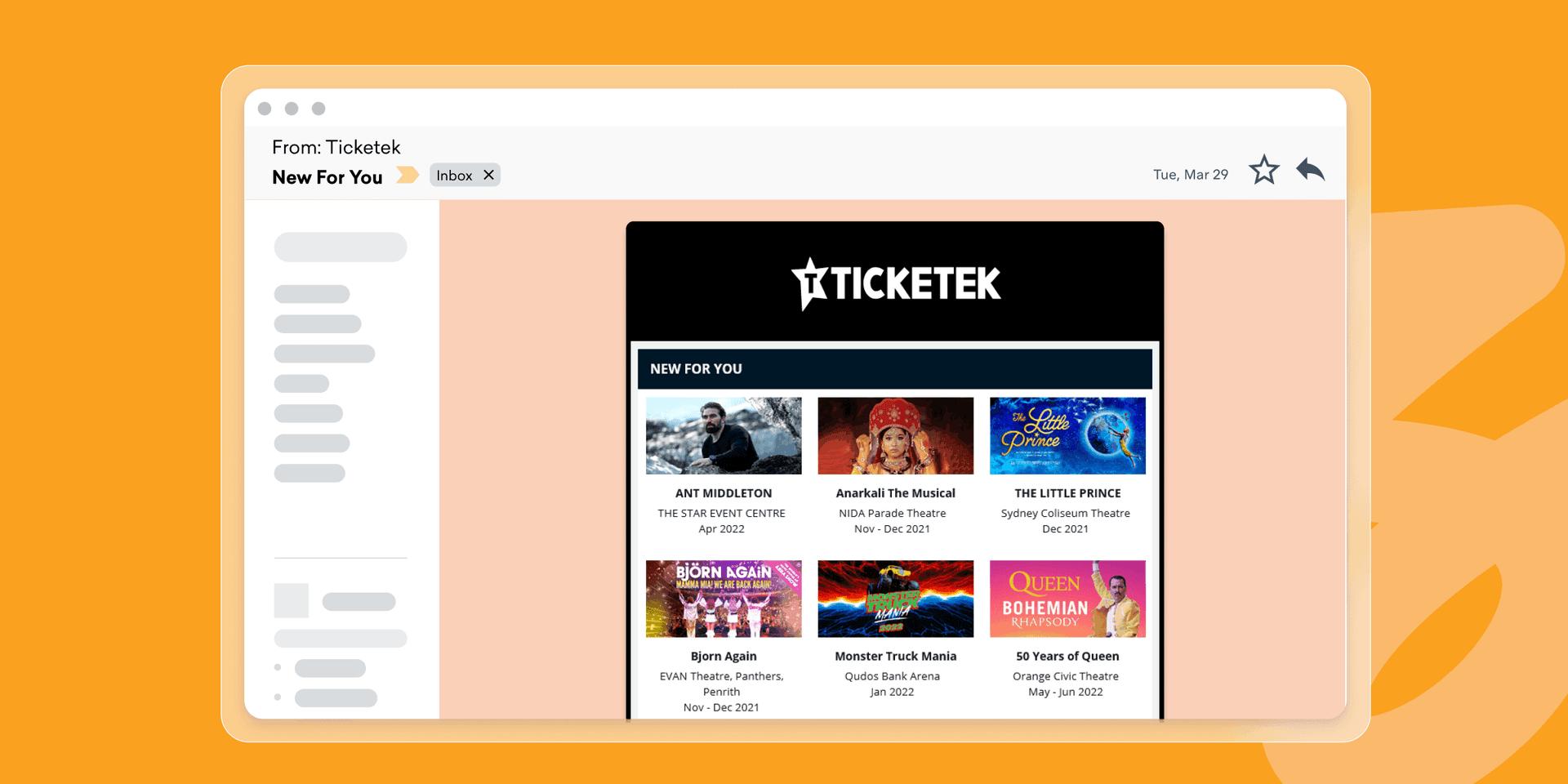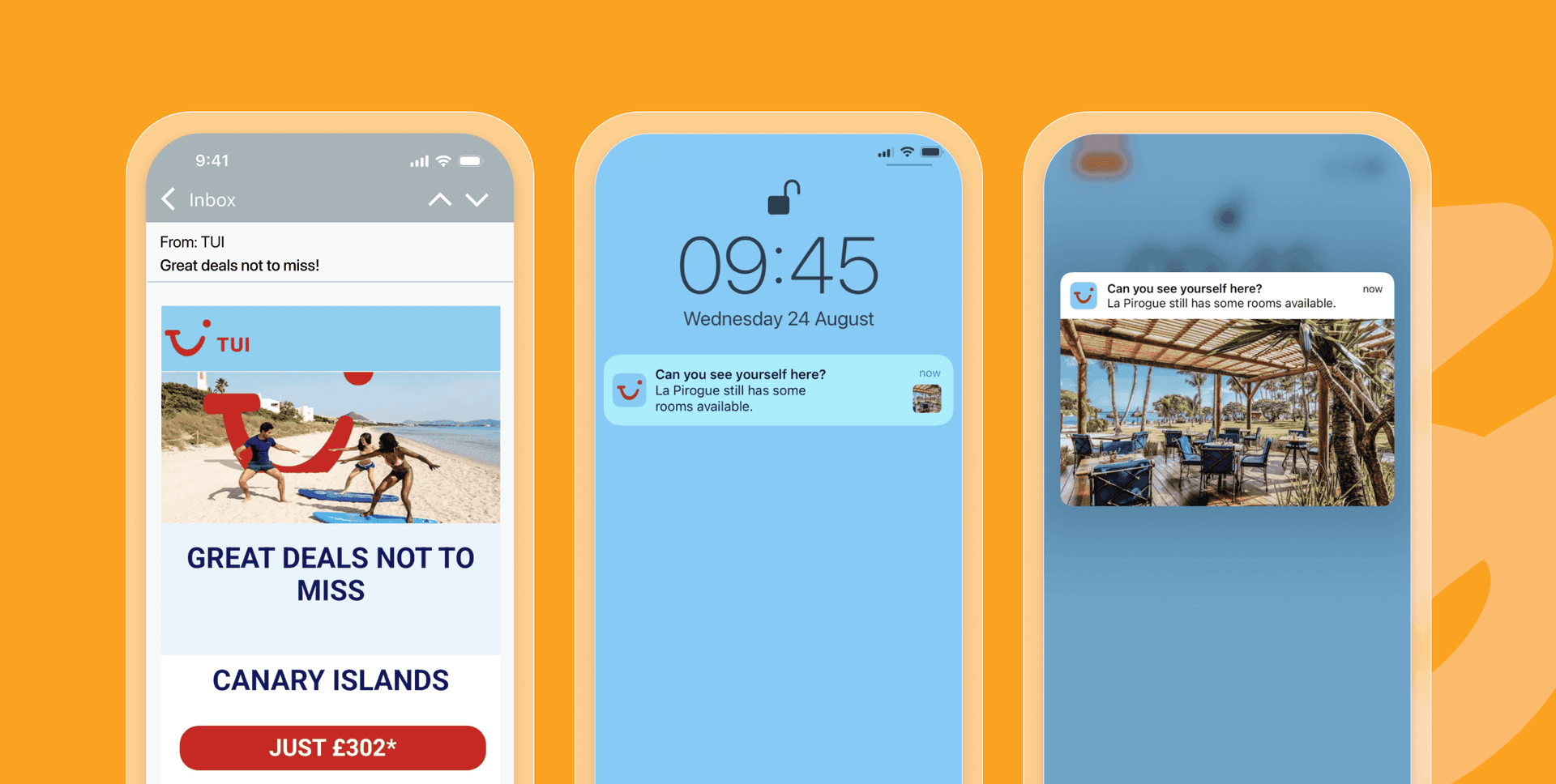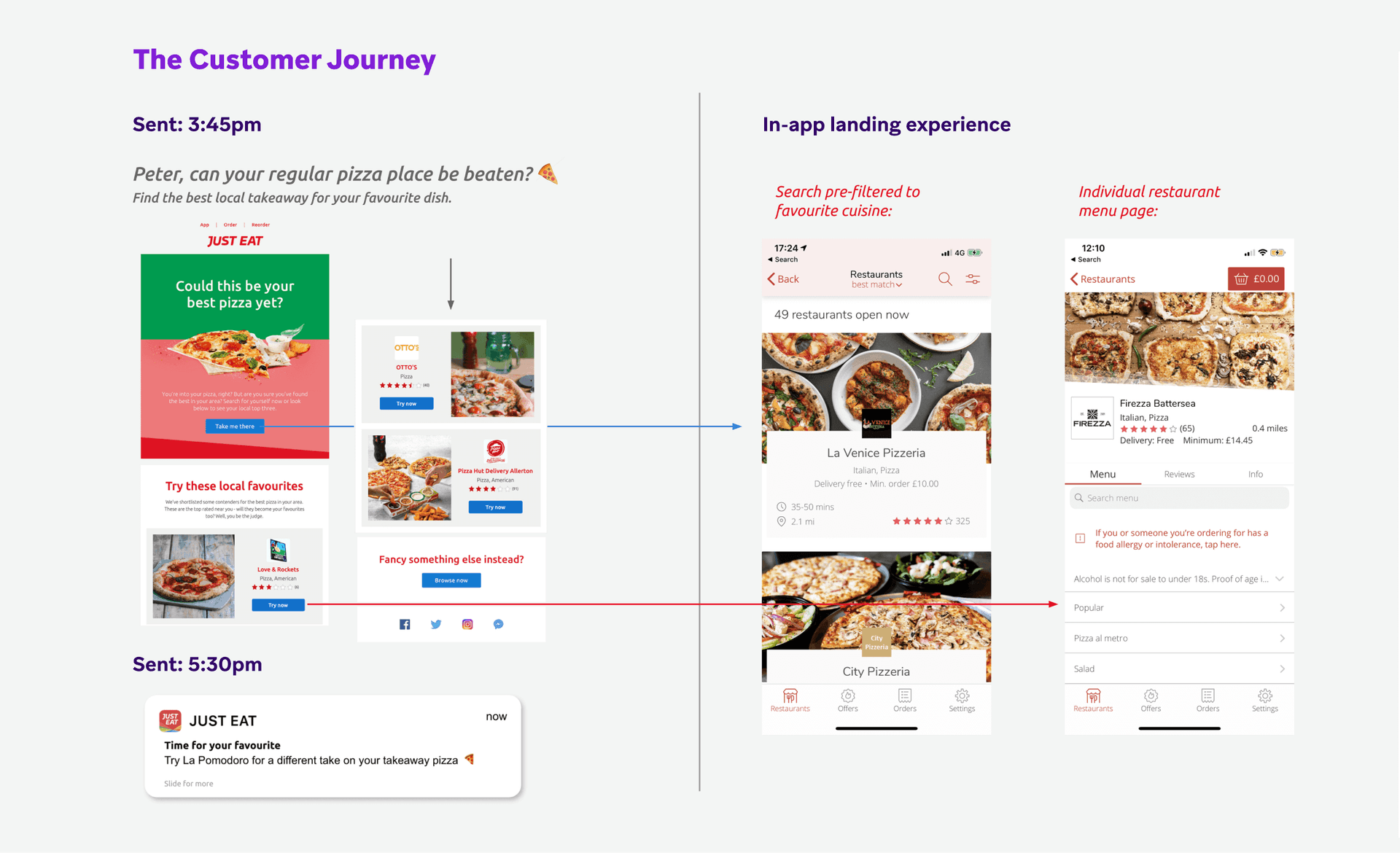The Power of eCommerce Merchandising: A Comprehensive Guide for Marketers
Published on May 24, 2024/Last edited on May 24, 2024/10 min read


Team Braze
In the era where online shopping has become the norm, eCommerce merchandising stands as a pivotal strategy for businesses looking to turn traffic into purchasers. However, it's more than just selling products online; it's about presenting and promoting products in a way that enhances the customer's shopping experience.
In this article, we’ll delve into the world of eCommerce merchandising and what it truly means, its importance in today's market, and what brands can expect to come next when it comes to this key topic:
- Understanding eCommerce merchandising
- The 4 key elements of effective eCommerce merchandising
- The role of eCommerce merchandising in business growth
- Case studies of successful eCommerce merchandising strategies
- What’s next for eCommerce merchandising and how Braze can help
Understanding eCommerce merchandising
What is eCommerce merchandising?
eCommerce merchandising is a multifaceted strategy that involves the selection, presentation, promotion, and pricing of products or services on an online platform. It's about creating a seamless and engaging shopping experience that not only attracts customers but also encourages them to make a purchase and return for more.
What are the different types of eCommerce merchandising?
Currently, eCommerce merchandising can be categorized into several types, each with its own unique approach and benefits. These are as follows:
- Visual merchandising, which focuses on the aesthetic presentation of products.
- Strategic merchandising, which involves the careful selection and promotion of products based on market trends and consumer behavior.
- Personalized merchandising, which tailors the shopping experience to individual customers based on their preferences and browsing history.
Why is eCommerce merchandising important?
eCommerce merchandising is crucial because it directly impacts a business's sales and profitability. Effective eCommerce merchandising can help businesses stand out in today’s highly competitive online marketplace by showcasing their unique selling and value propositions. It can also help businesses build strong relationships with their customers by providing personalized shopping experiences, which can lead to increased customer loyalty and repeat purchases. Moreover, it allows businesses to activate data and use analytics to understand customer behavior and preferences, enabling them to make data-driven decisions and optimize their product offerings.
In addition, eCommerce merchandising plays a vital role in enhancing the overall customer experience. With the right merchandising strategies, businesses can make the online shopping process more intuitive and enjoyable for customers. This includes providing high-quality product images and detailed product descriptions, offering personalized product recommendations, and implementing easy-to-use navigation and search functions. Furthermore, eCommerce merchandising can help businesses create a consistent brand image and message across all their digital channels, which can strengthen their brand identity and increase brand recognition.
In this era of digital transformation, eCommerce merchandising is not just a nice-to-have, but a must-have for any business looking to succeed in today’s online marketplace.
How eCommerce merchandising has evolved
The concept of merchandising is not new; it has been a cornerstone of retail for centuries. However, eCommerce merchandising has significantly evolved over the years, moving from simple online catalogs to sophisticated, personalized shopping experiences.
In the early days, eCommerce was simply a digital version of a physical store, with static product listings and a basic checkout process. However, with advancements in technology, it has transformed into a dynamic, customer-centric platform.
Today, AI and machine learning algorithms are used to analyze customer behavior and preferences, enabling retailers to offer personalized product recommendations and targeted promotions. Additionally, the integration of social media and mobile commerce has expanded the reach of eCommerce, making it more accessible and convenient for consumers. The use of augmented and virtual reality in eCommerce has also started to gain traction, offering immersive shopping experiences.
However, despite these advancements, the core principle of eCommerce merchandising remains the same: To present the right product, to the right customer, at the right time.
The 4 key elements of effective eCommerce merchandising
Product information and presentation
The way products are presented on your eCommerce platform can significantly influence a customer's decision to purchase. Detailed product descriptions, high-quality images, and customer reviews can provide shoppers with the information they need to make informed decisions. Additionally, a clean, organized layout can make it easier for customers to find and explore products.
Personalization and behavioral segmentation
Personalization is a powerful tool in eCommerce merchandising. By analyzing customer data, businesses can tailor the shopping experience to individual customers, showing them products that align with their preferences and past purchases. Similarly, behavioral segmentation allows businesses to group customers based on shared characteristics and tailor their marketing efforts accordingly.
Cross-selling and upselling
Cross-selling and upselling are effective monetization strategies for increasing the average order value. Cross-selling involves suggesting related products that the customer might be interested in, while upselling encourages customers to purchase a higher-priced item or add-on to enhance the product they are buying.
Search engine optimization (SEO) for eCommerce merchandising
SEO is crucial for eCommerce merchandising because it helps your online store rank higher in search engine results, making it more visible to potential customers. This involves optimizing your website's content and structure, using relevant keywords, and ensuring a fast and mobile-friendly website.
The role of eCommerce merchandising in business growth
How eCommerce merchandising drives sales and improves customer experiences
eCommerce merchandising plays a crucial role in driving sales. By presenting products in an appealing and organized manner, businesses can attract more customers and encourage them to make purchases. Moreover, effective eCommerce merchandising strategies can help businesses upsell and cross-sell products, thereby increasing the average order value.
However, eCommerce merchandising is not just about boosting sales; it's also about enhancing the customer experience. A well-merchandised eCommerce store can provide a seamless and enjoyable shopping experience, which can lead to higher customer satisfaction and loyalty. For example, easy navigation, accurate product descriptions, and high-quality images can make the shopping process easier and more pleasant for customers.
Case studies of successful eCommerce merchandising strategies
Let's look at some real-world examples of successful eCommerce merchandising that have significantly contributed to sales growth and excellent customer experiences.
1. Ticketek
Ticketek is an Australian event ticketing company focused on providing great experiences and it starts with customer engagement—the better engaged their customers are, the more ticketed events they become aware of, and the more great experiences they can have by purchasing those tickets. So when Ticketek wanted to improve that cyclical experience by leveraging first-party customer data and adding personalization to their messaging mix, they turned to a more robust engagement solution: Braze.
Challenge
Ticketek wanted to personalize their Weekly Newsletter emails with machine learning based upon customer data and preferences that they already had in their data warehouse.
Strategy
Leveraging the Braze platform’s Connected Content dynamic personalization feature, Ticketek was able to increase the range of products displayed to customers.

Results
Ticketek improved their click-to-convert rate by 228% and increased sales by 49% in connection with opened Weekly Newsletter emails.
2. TUI
As a global leader in travel and leisure, TUI is dedicated to helping customers bring their travel dreams to life all year long—but especially during the holiday season. With an ever-expanding customer base, their customer engagement strategy continues to evolve across channels and territories. Facing rising costs per acquisition and the loss of third-party cookies to help improve targeting, it was clear to the team that growing app engagement and boosting operational efficiency was imperative to making the season a success.
Challenge
Heading into the holiday season, TUI was looking to evolve their messaging strategy in order to keep customers engaged throughout every step of their journey.
Strategy
They transformed their in-the-moment communication by designing new cross-channel journeys that leverage real-time personalization, AI, and geolocation for maximum impact.

Results
The new cross-channel strategy helped drive 118% growth in customers using the app to book a vacation, a 205% increase in ancillary purchases (like airport parking), and a 78% increase in the proportion of holiday sales driven by the app.
3. Just Eat Takeaway.com
Just Eat offers choices that cater to every taste, mood, occasion, and budget. Their mission is to make food discovery exciting for everyone and bring joy to every occasion. To do that well, you have to get personal. Restaurant recommendations cut through a choice overload of thousands of restaurants. By serving up a simple choice of three, Just Eat was able to drive higher conversion rates.
Challenge
A Just Eat customer can choose from thousands of food-delivery options in their area—but too much choice is overwhelming. They needed timely, relevant recommendations to help them narrow down their options.
Strategy
They created several email campaigns informed by individual and group order behavior to serve up a shortlist of three recommended restaurants based around different compelling themes.

Results
The restaurant recommendation emails saw an average click-to-open rate uplift of 31% and an uplift in order of up to 5%.
What’s next for eCommerce merchandising and how Braze can help
The role of AI: Intelligence and relevance in the purchase journey
AI and machine learning are set to revolutionize eCommerce merchandising. These technologies can analyze vast amounts of customer data to generate personalized product recommendations and predict future buying trends. This not only enhances the shopping experience for customers but also helps businesses make more informed merchandising decisions.
With BrazeAIᵀᴹ, brands can leverage the Braze platform’s AI Item Recommendations feature to surface the next best product, content, or item to every customer from their Braze Catalogs. This allows them to easily plug intelligent recommendations into campaigns on any channel to help customers find more value from the brand. Additionally, brands can drive more conversions with the Braze Predictive Suite, which provides customizable predictive models that help identify, target, and engage customers most likely to perform any action, such as making a purchase.
The impact of mobile commerce
With the increasing use of smartphones for online shopping, mobile commerce is becoming a significant factor in eCommerce merchandising. Businesses need to ensure that their online stores are mobile-friendly and offer a seamless shopping experience across all devices. This includes having a responsive design, easy navigation, and fast loading times.
With BrazeAIᵀᴹ, brands can leverage the Braze platform’s Personalized Path feature to scale their personalization efforts and match each customer with the message copy, creative, channel, and offer that they are most likely to engage with at any step in a given journey—all with a simple toggle.
Final thoughts
Ultimately, eCommerce merchandising is a powerful strategy that can drive sales, enhance the customer experience, and contribute to business growth. From the careful selection and presentation of products to the use of personalization and SEO, effective eCommerce merchandising can make a significant difference in the success of an online store.
As we move further into the digital age, the importance of eCommerce merchandising will only continue to grow. Businesses must stay ahead of the curve by continuously optimizing their merchandising strategies and leveraging the latest technological advancements such as BrazeAIᵀᴹ to seamlessly tailor recommendations for each customer, unlock sophisticated personalization and prediction at scale, generate authentic content, and drive the most high-value actions from each customer.
Whether you're a small business owner or a marketing professional at a large corporation, now is the time to harness the power of eCommerce merchandising and take your online store to the next level. For further information on how Braze can support your strategy, check out our solutions for retail and eCommerce brands.
Related Tags
Be Absolutely Engaging.™
Sign up for regular updates from Braze.
Related Content
 Article5 min read
Article5 min readWhen buffer management goes wrong: Avoiding bias in AI decisioning models
January 13, 2026 Article9 min read
Article9 min readHow AI Decisioning Transforms Marketing (A Complete Guide)
January 08, 2026 Article6 min read
Article6 min readAI decisioning cheat sheet: How to crawl/walk/run with BrazeAI Decisioning Studioᵀᴹ
January 08, 2026